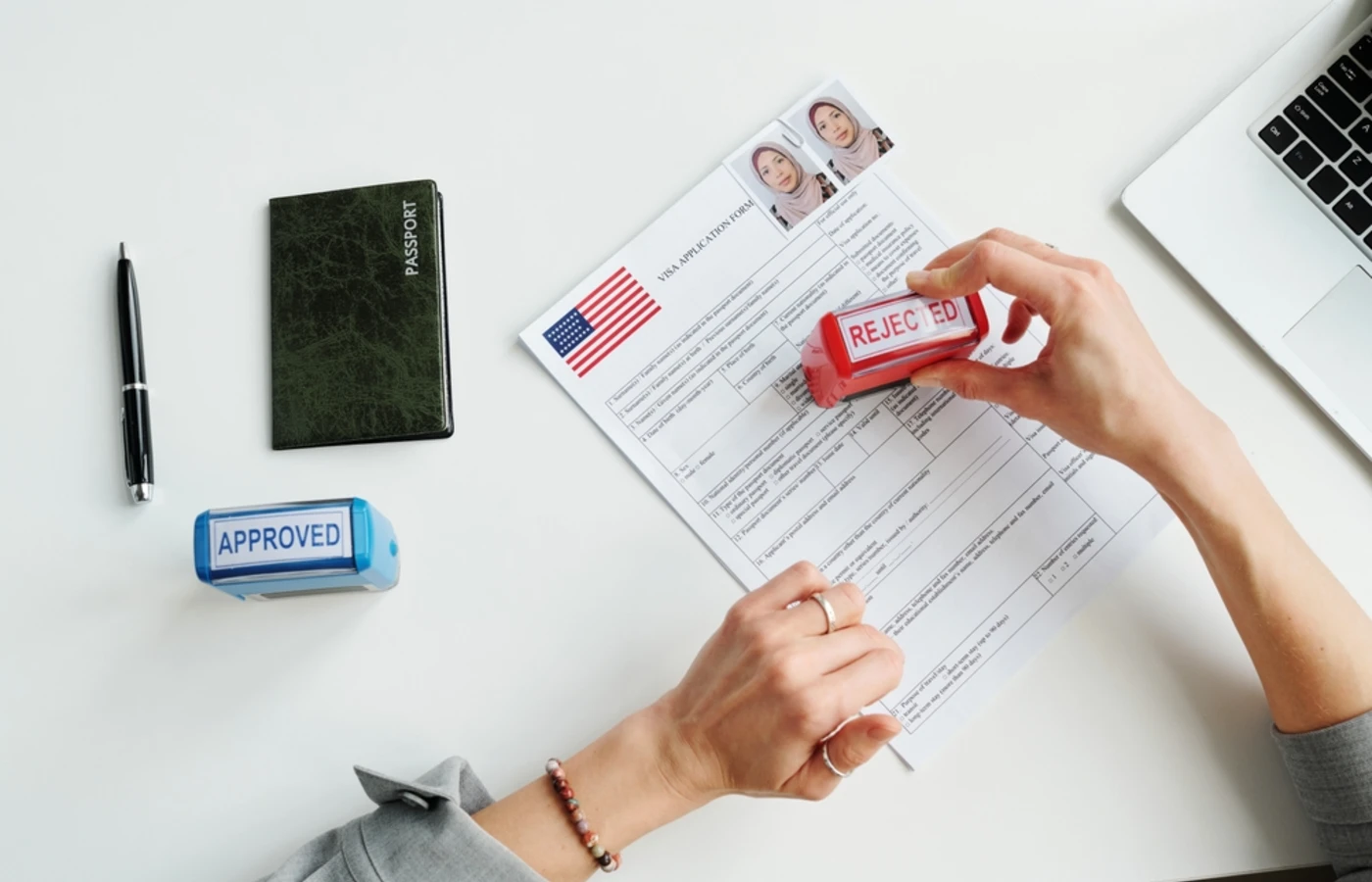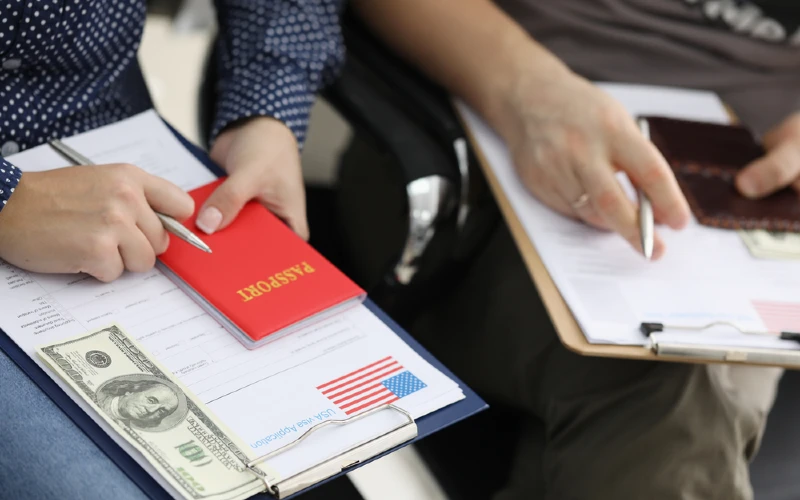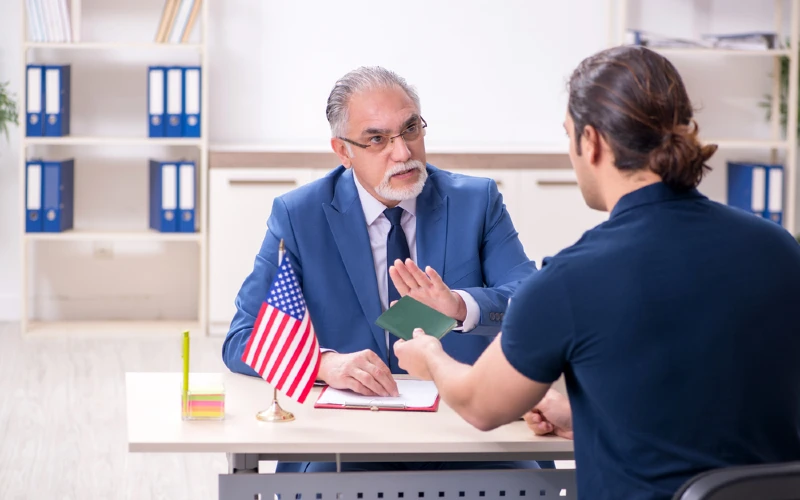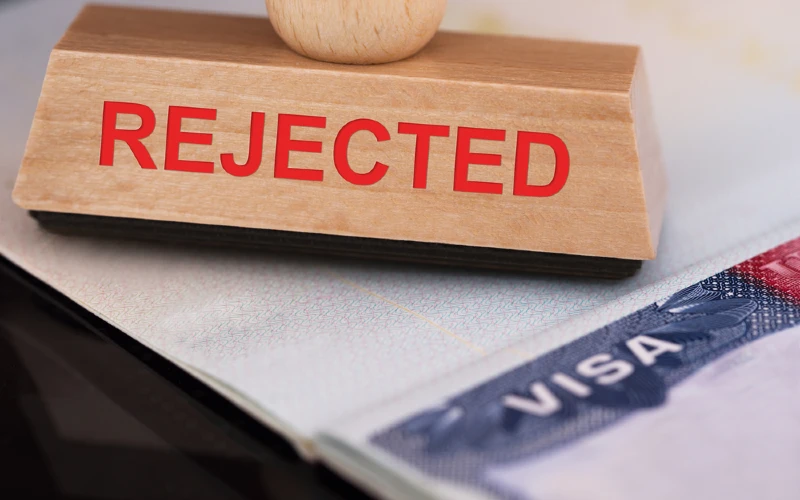The process of application to a USA visa is thrilling and can be stressful too. Millions of individuals each passing year seek numerous US visa types, such as USA visit visa or B1/B2 visa. Not every applicant, however, receives approval. Visa refusals are widespread and often occur for reasons that can be evaded by proper knowledge, understanding, and methodical preparation of the process. This go-to guide will delve into the most common reasons for US visa rejection reasons, along with ways to prevent them.
Common Reasons for U.S. Visa Refusals
Incorrect/Incomplete Application
The applicant must be keen on detail when enrolling for this visa. Omissions or mistakes in the form could lead to rejection or a significant delay. This mistake is the most common, as even minor inaccuracies can impact the application’s overall credibility.
Ways to Prevent- Read the form attentively, comprehend each question, furnish answers that are detailed and specific, double-check prior submission, and cross-verify passport numbers, dates, and spellings.
Insufficient/Inadequate Documentation
You should also determine the visa category that you are seeking. There are specific documentary requirements for each. The lack of all supportive documentation may result in the application being refused/rejected.
Ways to Prevent- Neatly organize the paperwork, carry both originals to the interview along with a handful of photocopies, and review cautiously the US embassy/consulate’s precise checklist presented for your specific visa.
Fraud/Manipulation
Furnishing fake information or distorting facts is a severe breach. This may incorporate forging of documents, misrepresenting US tour intentions, or misstating employment records. Such actions cause denial, legal repercussions, and long-term immigration implications.
Ways to Prevent– Be truthful at all times, present honest answers, and offer only authentic documents.
Deficient Interview Preparation
There are numerous visa types that involve an in-person interview at the US consulate/US embassy. The crucial thing every applicant should do is to prepare meticulously beforehand by understanding the exact purpose of their trip, learning the visa requirements, and what they clearly intend to do on this specific trip. Inability to address questions or inadequate preparation for the tour is likely to prompt uncertainty in the assigned visa officer’s mind, ultimately leading to a denial.
Ways to Prevent– Practice typical questions, prepare as if for any job interviews, and in every response be polite, consistent, and confident.
Unreliable Financial Records
Regarding tourist visas, as with other types, every applicant must be able to prove that they have the necessary funds to cover their expenses while in the United States. This includes submitting income tax returns, bank statements, and other financial records. Irregularities in financial statements or the inability to present appropriate financial documents may cause distrust regarding the particular applicant’s ability to sustain himself/herself in the course of the stay.
Ways to Prevent– For financial stability evidence, gather tax returns, bank statements, and salary slips, and also maintain a 3-6 months bank balance prior to submission.
Disregarding Past Immigration Entries
Every applicant is required to disclose their earlier immigration entries precisely as per facts comprising immigration violations, any overstays, or prior visa denials. The consequences of non-compliance with the same may be said to constitute misrepresentation and eventually lead to rejections or prohibition/ban on prospective visa requests.
Ways to Prevent– Always unveil prior issues truthfully. Briefly highlight why, if earlier denied, and how the situation improved.
Minimal Home-Country Ties
The visa officers determine which applicants have good relations with their own country and are likely to go back to the country after visiting the US. Strong ties may consist of family connections, property ownership, stable employment, and other assurances. The applicants are expected to show their connection with their respective countries to convince the visa officer that they will return.
Ways to Prevent– Demonstrate ongoing education, family responsibilities, property ownership, and employment confirmation. Strong ties will boost the applicant’s credibility.
Erroneous Travel Plans
The applicants must be able to provide concise and constant information regarding the purpose of the visit, the appropriate stay period, and lodging arrangements. Any contradictions or ambiguities in the information received may raise questions about the tour’s authenticity and result in a visa refusal.
Ways to Prevent– Keep the story both consistent and clear. Ensure the accommodation plans, travel itinerary, and flight reservations correspond to the submitted application data.
Refusing Expert Intervention if Applicable
In cases of uncertainty about the application method or any complex/difficult visa case, proficient immigration support from attorneys/consultants is suggested. Such specialists can help instruct the application practice, review the paperwork for completeness and accuracy, assist in pre-interview preparation, and also ensure the applicant follows an all-encompassing US visa appointment guide to evade widespread errors.
Ways to Prevent– For complicated cases, reach a certified immigration consultant/lawyer, as they can both aid in preparing the appropriate documents, together with strengthening the case.
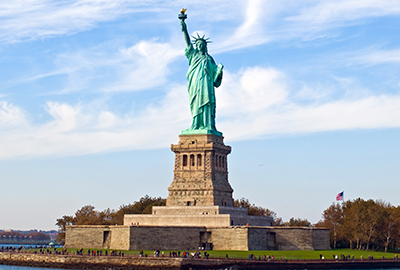
USA Visa
Easy Documentation
Online Payment Option
Travel Insurance Gaps
The other usual visa refusal factor is the applicant’s inability to demonstrate their financial competence throughout their US stay period. The government will be interested in ensuring that the applicant can afford their entire travel expenses, including accommodation, flights, and other expenses that may arise.
Ways to Prevent– Before applying, acquire suitable travel insurance. Be ready with a copy of the same and draw attention to its coverage in the course of any emergency.
Undefined Travel Intent
The most crucial facet of the application is the reason the applicant is visiting the United States. The visa officer concerned will dig deeper into why the applicant is going, thus the applicant requires having a compelling reason for justifying their journey. It is wise to present proof verifying visit plans.
Ways to Prevent– Ensure to be exact and clear. Furnish admission letter (for study), planned itinerary (for tourism), employer’s offer letter (for work), along with supporting documents to make the purpose convincing.
Application Timing
For a US visa application, the timing should be clearly indicated, as there are numerous visa types with distinct processing time. Thus, one needs to apply for the specific visa some 45 days prior the tour. Should they apply for the same just a handful of days earlier, then refusal is certain. For best results, fill it and apply a month before the chosen trip date.
Ways to Prevent– Go with early applications to fix issues, if there are any, in case of a request for further documentation.
Overlooking the Invitation Letter
An invitation letter indeed is an imperative support document for every applicant traveling to the United States for events, family visits, or business meetings. Neglecting or not mentioning this may weaken the application because it makes it uncertain to the present consular officer of one’s travel motive. In the absence of needed documentation, the officer may be skeptical of one’s visit.
Ways to Prevent: Request from the host an authorized US Visa Letter of Invitation that appropriately states the host details, stay time, and visit intent to prove valid intent.
USA B1/B2 Visa Rejection Reasons
When applicants specifically apply for a B1/B2 visa, frequent rejection are often due to prior immigration violations, incomplete documents, insufficient funds, unclear travel cause, and weak home ties. Familiarizing oneself with these particular pitfalls improves preparation and, at the same time, supports an applicant’s approval prospects.
Closing Tips for Swift US Visa Approval
- Get Started Quick: Prepare paperwork well beforehand.
- Follow Updates: For changes/updates on visa, check with the US State Department.
- Be Truthful: Honesty strengthens credibility/trust.
- Obtain Guidance: Seek immigration experts’ advice if uncertain.
Conclusion
Any occurrence of the USA visa dismissal can be unsatisfying in most instances, yet avoidable. The majority of rejections are due to vague intentions, insufficient financial proof, missing documents, or errors. Telling the truth, being organized, and being rightly prepared will improve one’s possibilities of approval. If refused, learn why, address the issue, and re-try. A strategic approach will make the US excursion attainable.
